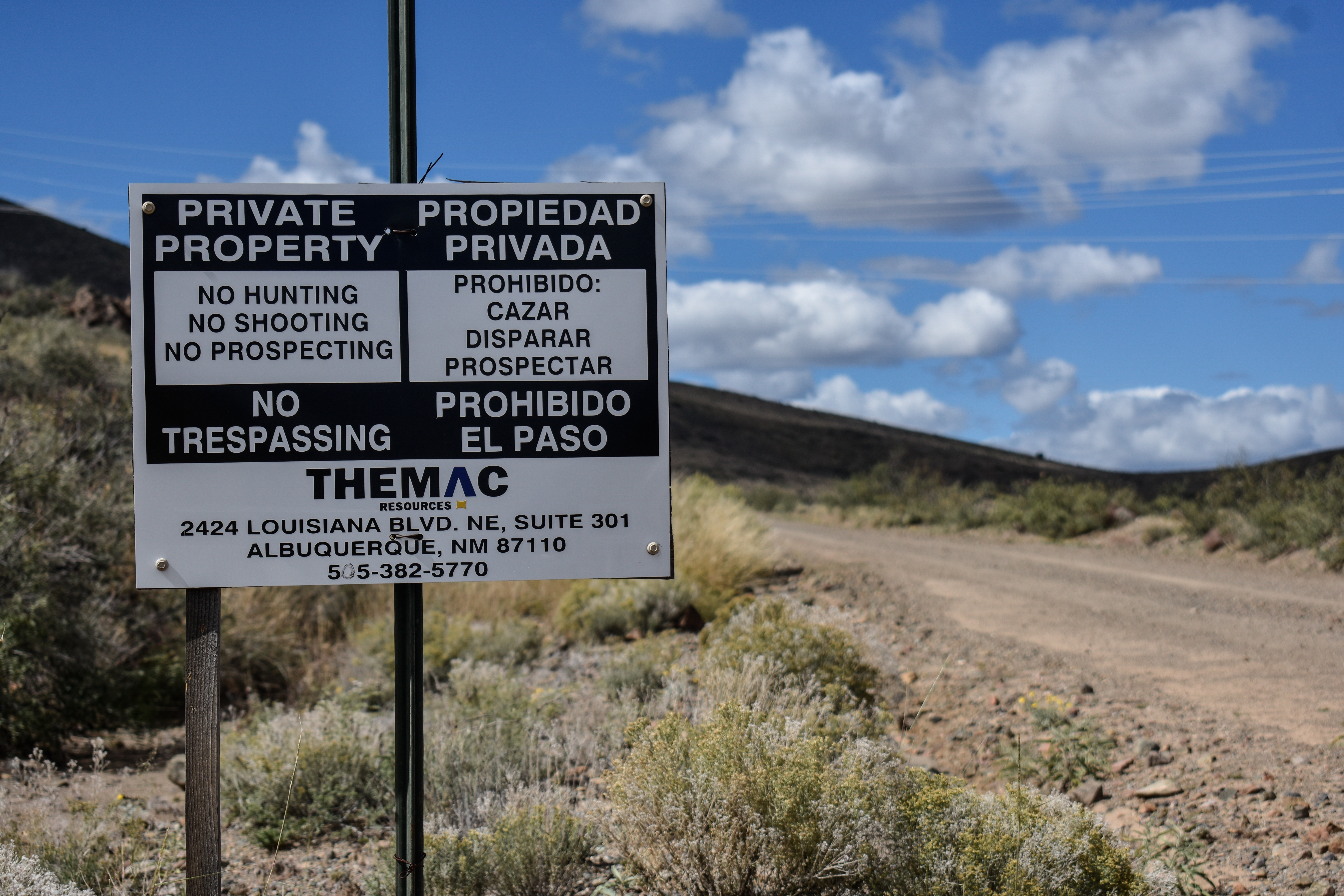Drivers on I-25 in southern New Mexico may admire Sierra County’s vast canyons and rolling hills, dotted with native flora, but what they may not appreciate is the controversy surrounding a copper mine just out of sight, near the historic town of Hillsboro.
Since 2010, the New Mexico Copper Corporation (NMCC), a subsidiary of a Canadian mining company known as THEMAC Resource Group, has been pursuing permits to reopen the Copper Flat Mine. That decision is now imminent.

THEMAC has invested more than $55 million to restart the idle mine.
The Copper Flat Mine is no stranger to operations, it was first mined by Quintana Minerals in 1982, until the price of copper dropped from $1.70 per pound to $0.70 per pound, leaving the mine unable to operate. By 1994, another mineral company, Alta Gold, bought the mine, but went bankrupt five years later before the company could extract minerals.
As of early December, copper is valued at $2.85 per pound, and has fluctuated in value from $3.30 per pound in June to $2.70 per pound in late July.
Hillsboro has seen its share of booms and busts over its long history with mining. According to thediggings.com, a website that tracks mining claims, of the 9,887 mining claims near Hillsboro, only 544 are active.
The mine’s potential has enticed some Hillsboro citizens. Jaime Lee, an antique shop curator in Hillsboro, said he thinks the mine will be good for the county.
“If Sierra County is benefitted for 15 years from the mine, that alone is great,” Lee said. “If it slows down after 15 years, well, it slows down. Right now it’s not speeding up. Bottom line, I’m for it.”
Bruce Cosper is a Hillsboro local and owner of Black Range Construction. He also worked at Quintana Minerals when their operations shut down. Cosper said regardless of the price of copper dropping, he supports the mine.
“Sierra County is one of the poorest counties in the flippin’ state,” Cosper said. “Why should we be turning away jobs that can support our tax base? Better schools, better hospitals, better roads. Supply some good paying jobs.”
Due to its potential to improve the economy of Sierra County, the mine has won over some government officials like Sierra County Commissioner, Jim Paxon. During an Oct. 24 hearing for the Copper Flat Mine, Paxon told the New Mexico News Port he supports the mine.
“What we’re hoping as county commissioners, is that this mine will invigorate the economy, restore our communities to being functioning and enthusiastic and full of life,” Paxon said.
According to the mining company’s website, if operating, the mine is expected to generate almost $23 million in property, severance and processor tax. For the fiscal year of 2016, Sierra County generated nearly $17 million dollars.
Opponents of the mine say it will negatively impact groundwater levels in the region.
Lee Newman is a local rancher who makes his living through his business, Newman’s Nursery. His nursery is about 20 miles east of the mine.
Newman said if the mine opens, his nursery will be negatively affected through a reduction in groundwater.
“According to their report, the artesian wells will dry up completely, and our domestic wells will dry up 20 feet,” Newman said. “They tell us, ‘Don’t worry — we’re not taking your water rights, just drill more wells.’ Well, there may not be any more water down there. There comes a point where you put so many pumps into the system that it’s really gone.”

According to a 2015 Environmental Impact Statement (EIS) produced by the Bureau of Land Management, the Copper Flat Mine will reduce “groundwater discharge to Las Animas Creek, Percha Creek, and the Rio Grande, including Caballo Reservoir.”
“The predicted reductions in groundwater discharge are expected to have a more notable effect on the Rio Grande, reducing surface water flows and potentially the amount of water stored behind Caballo reservoir,” according to the EIS.
In an effort to offset the mine’s water usage, the NMCC made a deal with the Jicarilla Apache Nation. In exchange for $50,000 a year, through a 15-year water lease, the Jicarilla Apache Nation will release almost 1 billion gallons of water a year into the Rio Grande through the San Juan – Chama Project. The NMCC also agreed to give first preference in jobs to members of the Nation.
The water concerns also affect nearby states. On April 12, 2018, Pat Gordon, the Texas Rio Grande Compact Commissioner, sent an email to Tom Blaine, a New Mexico State Engineer, bringing Texas’s concerns to his attention.
“Texas is aware of NMCC’s attempts to acquire rights to water that would purportedly offset the impacts to the Rio Grande and Caballo Reservoir,” Gordon wrote. “The 15-year lease that NMCC has with the Jicarilla Apache Nation for San Juan Chama Water, that New Mexico may require as some type of offset for the diversion of Texas’s compact water, would not come close to remedying the immediate and long term depletions to the Rio Grande and Caballo Reservoir caused by the Mine.”
John Fleck, the director of water resources at the University of New Mexico, said large water impacts will affect watersheds in northern New Mexico too.
“We just have to recognize that that’s going to be a trade off — there’s going to be less water somewhere else,” Fleck said.
In 2013, Texas sued New Mexico, alleging that the Land of Enchantment is not giving the Lone Star State it’s fair share of water, per the 1938 Rio Grande Compact — a water treaty between Colorado, New Mexico and Texas. In January of 2018, the Supreme Court ruled that the federal government will now become involved in the water rights issue.
The New Mexico Environment Department is set to decide on on the status of NMCC’s permits in early 2019.
Justine Lopez and Anthony Jackson are freelance reporters with the New Mexico News Port. You can contact them on Twitter @Justine_Lopez95 and @TonyAnjackson.